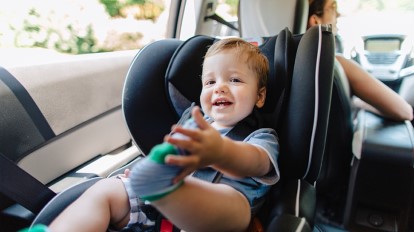 With summer just around the corner and the easing of many pandemic restrictions, many families will be taking to the roads for vacations and visits with loved ones. Families with young children depend on the child safety seats to protect their child in the event of a crash, whether they are driving across the state or just down the road. However, the number of parents who unknowingly do not use the safety seats the correct way is alarming. National data reveals that four out of every five seats are being used incorrectly and this puts children at high risk of serious injury or death in an accident.
With summer just around the corner and the easing of many pandemic restrictions, many families will be taking to the roads for vacations and visits with loved ones. Families with young children depend on the child safety seats to protect their child in the event of a crash, whether they are driving across the state or just down the road. However, the number of parents who unknowingly do not use the safety seats the correct way is alarming. National data reveals that four out of every five seats are being used incorrectly and this puts children at high risk of serious injury or death in an accident.
Child Safety Seat Base Installation
One of the most common mistakes parents make with child safety seats is failing to make sure the base of the seat is installed tight enough. To ensure that your seat is properly installed, try grabbing the base of the seat on each side, where the seat belt is pulled through, and try to move it. The base should not be able to move at all. If it moves, whether forward or side to side, this means that it is not installed correctly, and the seat belt needs to be tightened.
To help with this process when installing an infant seat, place your elbow on the base and put as much of your weight on it as possible as you tighten the seat belt. When installing a larger child safety seat, use your knee instead of your elbow on the seat’s base.
Parents also need to ensure that once the belt is as tight as it can go, that the seat belt actually locks. Unfortunately, too many parents forget this step, which can cause horrific loss if there is a crash.
Child Safety Seat Harness Use
Another common mistake parents make with child safety seats is the use of the harness. Many parents fail to make the harness straps tight enough. If the straps are too loose, there is a dangerous risk of the baby getting thrown out of the seat if there is a crash. When a child is correctly harnessed into their seat, it should be impossible to pinch ay of the harness strap between your fingers.
Each time you strap your child in their seat, you should always make sure there is no slack at all in the harness straps and they are snug. Although we are headed into the warmer months, it is still a good time to remind parents how critical it is to remove a child’s heavy coat in the colder months before placing them into the harness. Too many parents put the straps around the winter coat, and not around the baby, leaving the child again at a high risk of being propelled from the seat if there is a crash.
Another dangerous error parents make is putting the harness straps in the wrong slots. Rear-facing seats should have harness slots put through the lower slots. When the seat is forward-facing, then the upper slots should always be used. If the harness is in the wrong slots, it could break during a crash, again putting the child in danger.
And speaking of rear- and forward-facing seats, the placement of the seat is also another area where errors are made, and children are put at risk. Too many parents turn the seat around too early. A baby or toddler who weighs less than 20 pounds should never be put in a safety seat that is in a forward-facing position, no matter how old they are.
Let Our Firm Help
If your child has suffered an injury in a car accident caused by the negligence of another driver, contact a North Carolina car accident attorney to find out what legal options may be available. Injury claims involving child victims can be complex, including the statute of limitations for filing a claim and other factors. Your child may be entitled to financial compensation for both past and future medical expenses, pain and suffering, emotional anguish, scarring, disfigurement, and any permanent disabilities their injuries may have left them with. Contact Shapiro, Washburn & Sharp to schedule a free case evaluation and find out how we can help.
RELATED CONTENT